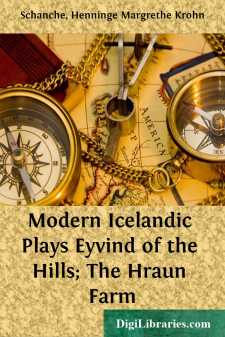Categories
- Antiques & Collectibles 13
- Architecture 36
- Art 48
- Bibles 22
- Biography & Autobiography 813
- Body, Mind & Spirit 142
- Business & Economics 28
- Children's Books 17
- Children's Fiction 14
- Computers 4
- Cooking 94
- Crafts & Hobbies 4
- Drama 346
- Education 46
- Family & Relationships 57
- Fiction 11829
- Games 19
- Gardening 17
- Health & Fitness 34
- History 1377
- House & Home 1
- Humor 147
- Juvenile Fiction 1873
- Juvenile Nonfiction 202
- Language Arts & Disciplines 88
- Law 16
- Literary Collections 686
- Literary Criticism 179
- Mathematics 13
- Medical 41
- Music 40
- Nature 179
- Non-Classifiable 1768
- Performing Arts 7
- Periodicals 1453
- Philosophy 64
- Photography 2
- Poetry 896
- Political Science 203
- Psychology 42
- Reference 154
- Religion 513
- Science 126
- Self-Help 84
- Social Science 81
- Sports & Recreation 34
- Study Aids 3
- Technology & Engineering 59
- Transportation 23
- Travel 463
- True Crime 29
Modern Icelandic Plays Eyvind of the Hills; The Hraun Farm
Categories:
Description:
Excerpt
INTRODUCTION
BOTH volumes of the Scandinavian Classics selected to appear in 1916 are by natives of Iceland. They belong, however, to periods of time and to modes of writing remote from each other. Snorri Sturluson, the greatest of Icelandic historians, was born in 1179. His Prose Edda, the companion-piece of the present volume, is a Christian's account of Old Norse myths and poetic conceptions thus happily preserved as they were about to pass into oblivion. More than seven hundred years separate Jóhann Sigurjónsson from Snorri, and his work is in dramatic, not saga form. But even as in outward appearance modern Iceland is not unlike ancient Iceland, so the Icelandic writers of the present have marked kinship with the past. Despite many centuries of relative neglect, the old traditions lived on, cherished by scholars, until now, at the beginning of the twentieth century, the Icelandic mind appears to be again renascent and creative. Einar Jónsson, the sculptor, has his counterpart in the domain of letters in such recent writers as Jónas Jónasson, Emar Hjörleifsson, Gudmundur Magnússon, Jónas Gudlaugsson, Gunnar Gunnarson, and Gudmundur Kamban, while every important fjord and valley can claim its own poet or novelist. As yet, the most distinguished performance of these younger authors is the play printed in this volume, Eyvind of the Hills (Bjærg-Ejvind og hans Hustru), by Jóhann Sigurjónsson. Among literary phenomena Eyvind of the Hills is a surprise, almost as though Iceland woke to find her naked mountains clothed in forest in a night.
Let Sigurjónsson tell his life story in his own words: "I was born June 19, 1880, on a large farm in the northern part of Iceland. Our household numbered about twenty people. A broad stream, well stocked with salmon; on both sides of the river, rocks where thousands of eider-ducks had their nests; a view out over the Atlantic with high cliffs where sea-birds lived; lava-fields with unusual flowers; and in the distance blue mountains; such was the theatre where I acted my childhood pieces and where I wrote my first poems.
"When fourteen years old, I was sent to school at Reykjavik; but after pocketing the diploma of the upper class, my longing led me down to Copenhagen, where I chose the study of veterinary science. For three years I worked zealously at my studies and took all the preliminary examinations required, until suddenly I burned my ships and resolutely threw myself into the work of a playwright. At first one difficulty piled up after another. To begin with, I had to write in a language not my own. And then, what knowledge I had of human nature was limited to a most incomplete knowledge of myself and of a few college chums of my own age. Besides, it was not long before I had to concern myself about mere bread and butter.
"My first victory was an appreciative letter from Björnstjerne Björnson, wherein he promised warmly to recommend me to Gyldendal's, the great publishing house, which subsequently published my first play, Dr....


